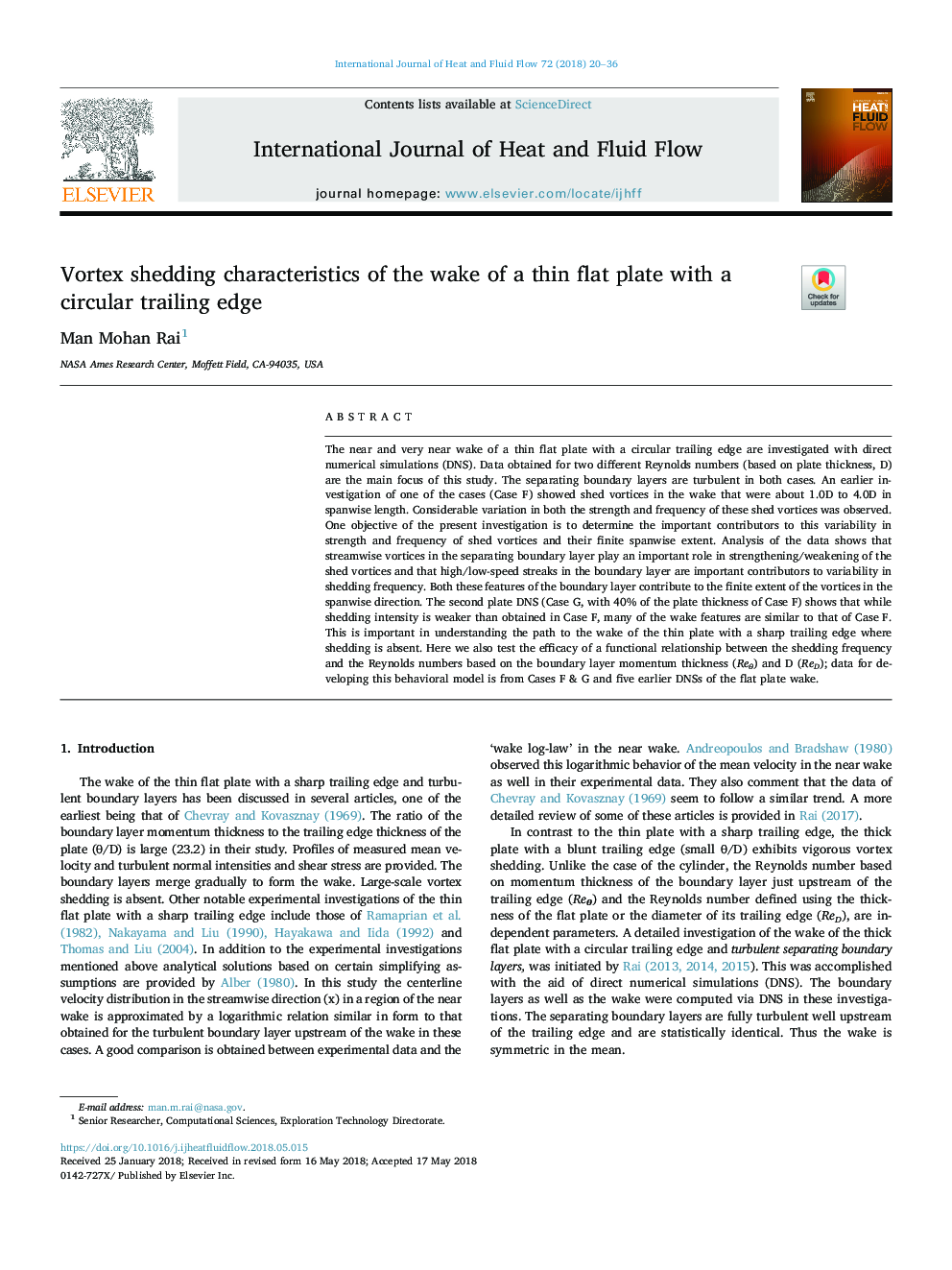| Article ID | Journal | Published Year | Pages | File Type |
|---|---|---|---|---|
| 7053424 | International Journal of Heat and Fluid Flow | 2018 | 17 Pages |
Abstract
The near and very near wake of a thin flat plate with a circular trailing edge are investigated with direct numerical simulations (DNS). Data obtained for two different Reynolds numbers (based on plate thickness, D) are the main focus of this study. The separating boundary layers are turbulent in both cases. An earlier investigation of one of the cases (Case F) showed shed vortices in the wake that were about 1.0D to 4.0D in spanwise length. Considerable variation in both the strength and frequency of these shed vortices was observed. One objective of the present investigation is to determine the important contributors to this variability in strength and frequency of shed vortices and their finite spanwise extent. Analysis of the data shows that streamwise vortices in the separating boundary layer play an important role in strengthening/weakening of the shed vortices and that high/low-speed streaks in the boundary layer are important contributors to variability in shedding frequency. Both these features of the boundary layer contribute to the finite extent of the vortices in the spanwise direction. The second plate DNS (Case G, with 40% of the plate thickness of Case F) shows that while shedding intensity is weaker than obtained in Case F, many of the wake features are similar to that of Case F. This is important in understanding the path to the wake of the thin plate with a sharp trailing edge where shedding is absent. Here we also test the efficacy of a functional relationship between the shedding frequency and the Reynolds numbers based on the boundary layer momentum thickness (Reθ) and D (ReD); data for developing this behavioral model is from Cases F & G and five earlier DNSs of the flat plate wake.
Related Topics
Physical Sciences and Engineering
Chemical Engineering
Fluid Flow and Transfer Processes
Authors
Man Mohan Rai,
